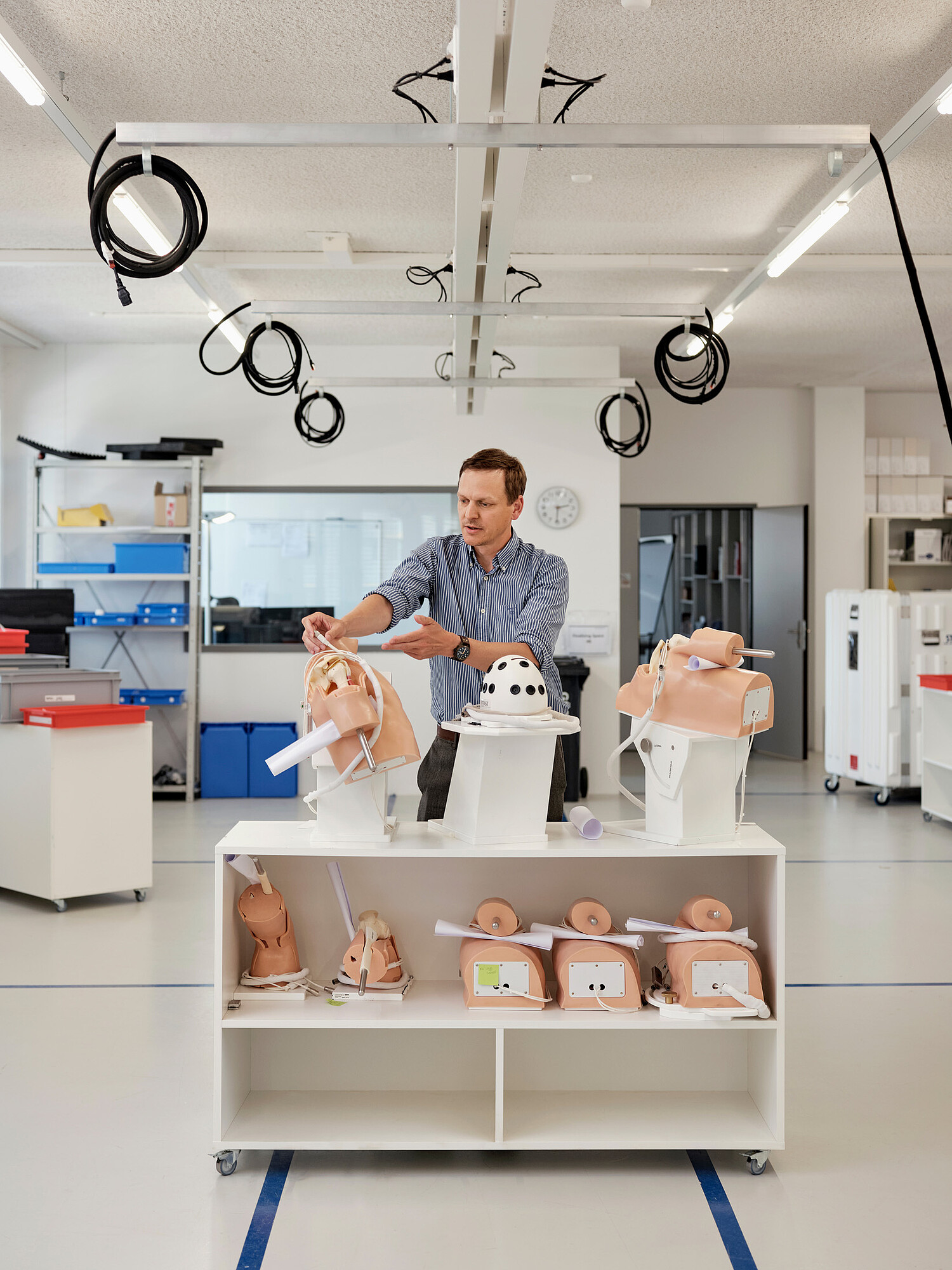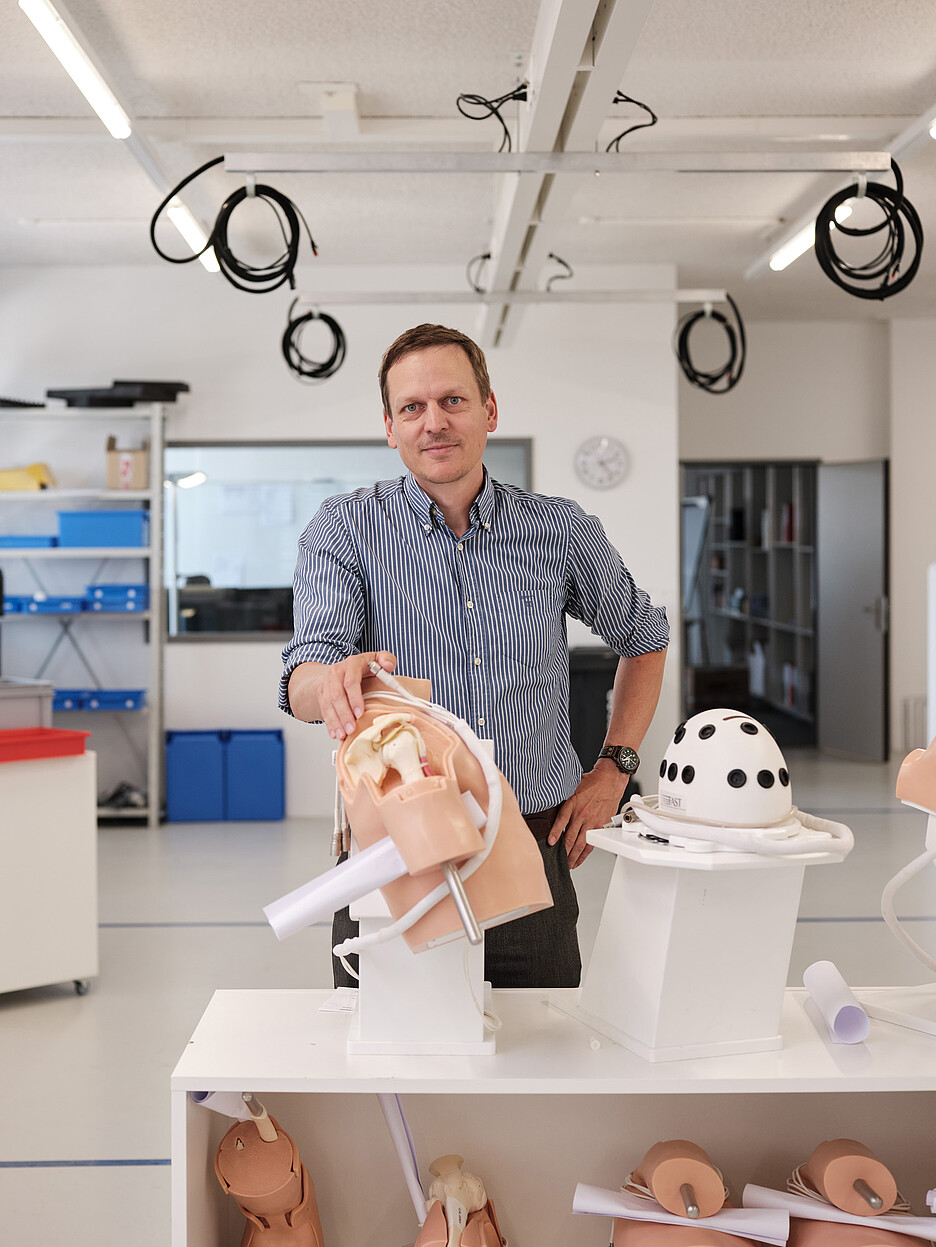
VirtaMed: highly realistic simulators for surgery training
The VirtaMed company developed out of a joint project conducted by ZHAW and ETH and constitutes a prime example of how different universities can work together. Today, VirtaMed has achieved international success.
VirtaMed cannot really be referred to as a young company any more, given that it was founded back in 2007. Based in Schlieren, the company specialises in highly realistic surgery simulators and enjoys worldwide success. VirtaMed is present at a number of locations across the globe.
Daniel Bachofen, an alumnus of the ZHAW School of Engineering, is a co-founder of the company and still has vivid memories of its beginnings more than 15 years ago. “The company had its origins in a large-scale research project for a surgery simulator, on which the School of Engineering, ETH Zurich and EPFL Lausanne were all cooperating”, says Daniel Bachofen, Chief Operating Officer at VirtaMed. “I myself had already completed my studies and was a Research Associate at the Institute of Applied Information Technology (InIT), and we at ZHAW were primarily responsible for the software engineering part of the project – that is, the software architecture and the framework for connecting up the developed software”, Bachofen explains.
Basic research and a practical orientation

The aim of the project was to develop a surgery simulator for doctors which they could use to train for operations under real conditions in the same way as pilots train on a flight simulator. Since the feedback received from doctors after completion of the project was highly positive, six of those who had been involved in the work decided to form a spin-off company. An ETH doctoral student and Daniel Bachofen ran the company’s operations to begin with. “My role was to further develop the prototype into a finished product”, says Bachofen. The founders’ idea worked out and ultimately led to a successful company.
“Apart from all the know-how contributed by ETH, it took the pragmatism and hands-on mentality of ZHAW to develop a finished product from the prototype.”
For Bachofen, VirtaMed is a prime example of what successful cooperation between ZHAW and ETH can look like. “Apart from all the know-how contributed by ETH, it took the pragmatism and hands-on mentality of ZHAW to develop a finished product from the prototype”, says Bachofen. “Students from just one of the universities would not have been able to manage this on their own”, the 43-year-old is convinced. Looking back, what helped him most was the high proportion of practical work, the search for solutions and the “tinkering” that students at ZHAW are taught, says Bachofen.
Strong link to the university
The link between ZHAW and VirtaMed still persists today. Daniel Bachofen held regular lectures at the School of Engineering, which have now been taken over by a colleague, and VirtaMed repeatedly accompanies students’ theses as an industry partner. The most recent case of cooperation is on the current Innosuisse “Proficiency” project, in which VirtaMed is the leading industry partner. In the case of VirtaMed, the link between the university and the spin-off is a partnership from which both parties have repeatedly benefited over a period of many years.
0 Comments
Be the First to Comment!